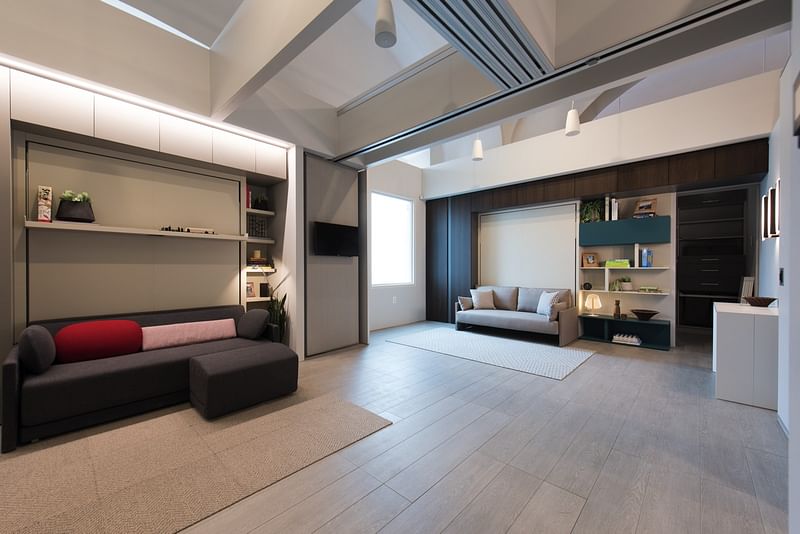Making Room: Housing for a Changing America
Saturday, Nov 18, 201712 AM — Sunday, Sep 16, 201811:59 PMEDT
Washington, DC, US | National Building Museum
Related
The post-World War II suburbanization of America was driven by the housing needs of nuclear families, the nation’s leading demographic. In 1950, these families represented 43% of our households; in 1970, it was 40%.
Since then, unprecedented shifts in demographics and lifestyle have redefined who we are—and how we want to live. RELATED CONTENT Interview with Lisa Blecker from Resource Furniture The Open House Resource Guide.

Today, nuclear families account for 20% of America’s households, while nearly 30% are single adults living alone, a growing phenomenon across all ages and incomes. Supply, however, has been slow to meet the demands of this burgeoning market—or to respond to the needs of our increasingly varied mix of living arrangements: from roommates to single-parent, extended, and fluid families. Innovation has been constrained, often by deeply-rooted zoning regulations.
A groundswell of action by housing entrepreneurs, however, is beginning to expand our options—making room for new models and design solutions. Looking beyond typical choices and layouts, they are offering alternatives at all levels of the market, from micro-units, tiny houses, and accessory apartments to cohousing, co-living, and beyond.
Making Room: Housing for a Changing America explores these cutting-edge typologies through case studies and the presentation of The Open House—a flexible, 1,000-square-foot home designed for the exhibition by architect Pierluigi Colombo. The Open House features a hyper-efficient layout, movable walls, and multifunctional furniture, allowing the space to meet the needs of a variety of today’s growing but underserved households.


Share
0 Comments
Comment as :